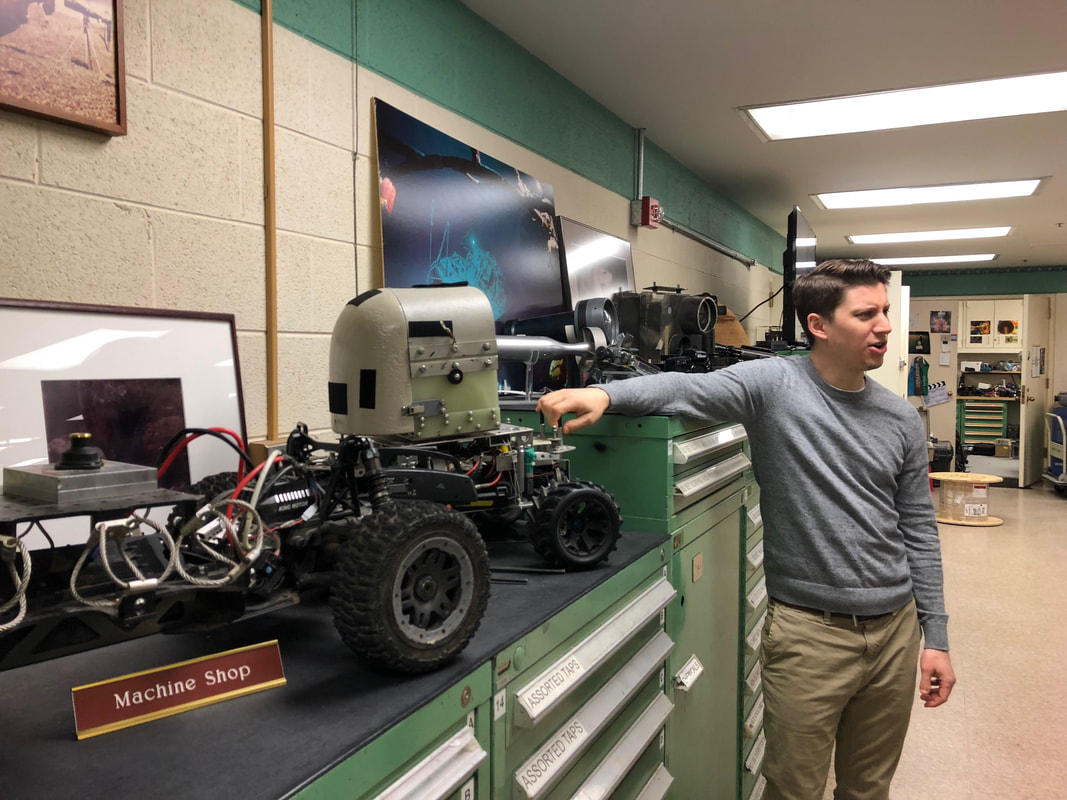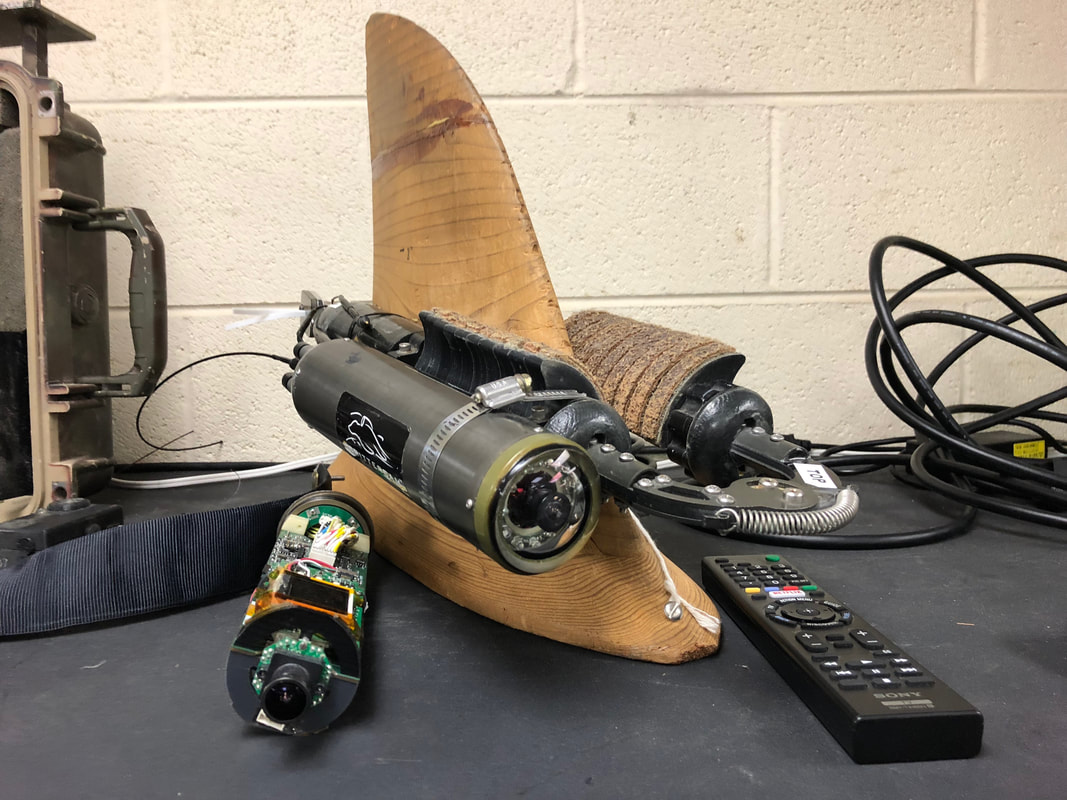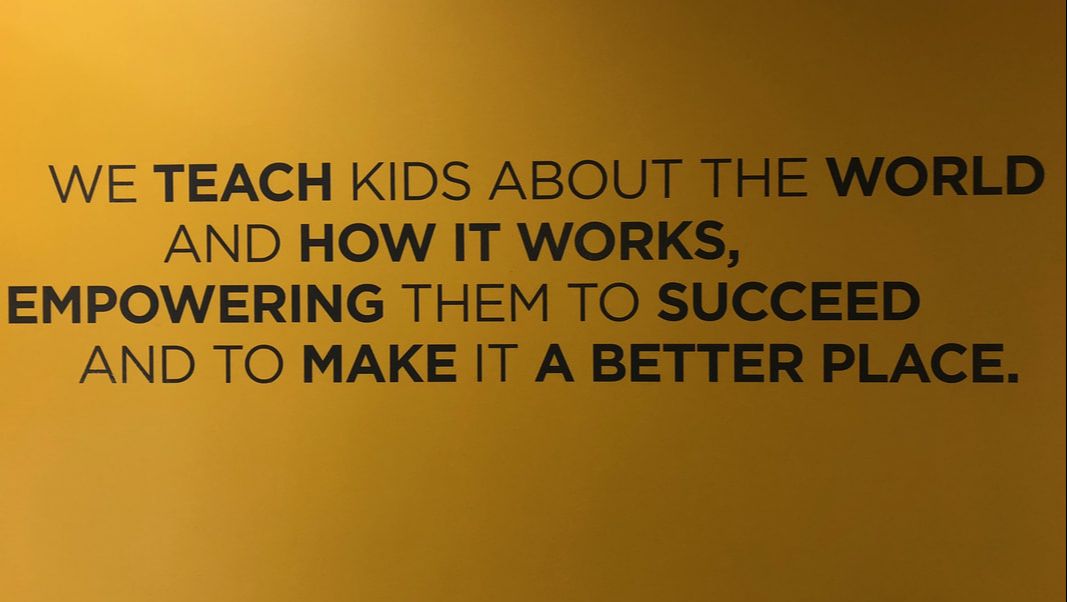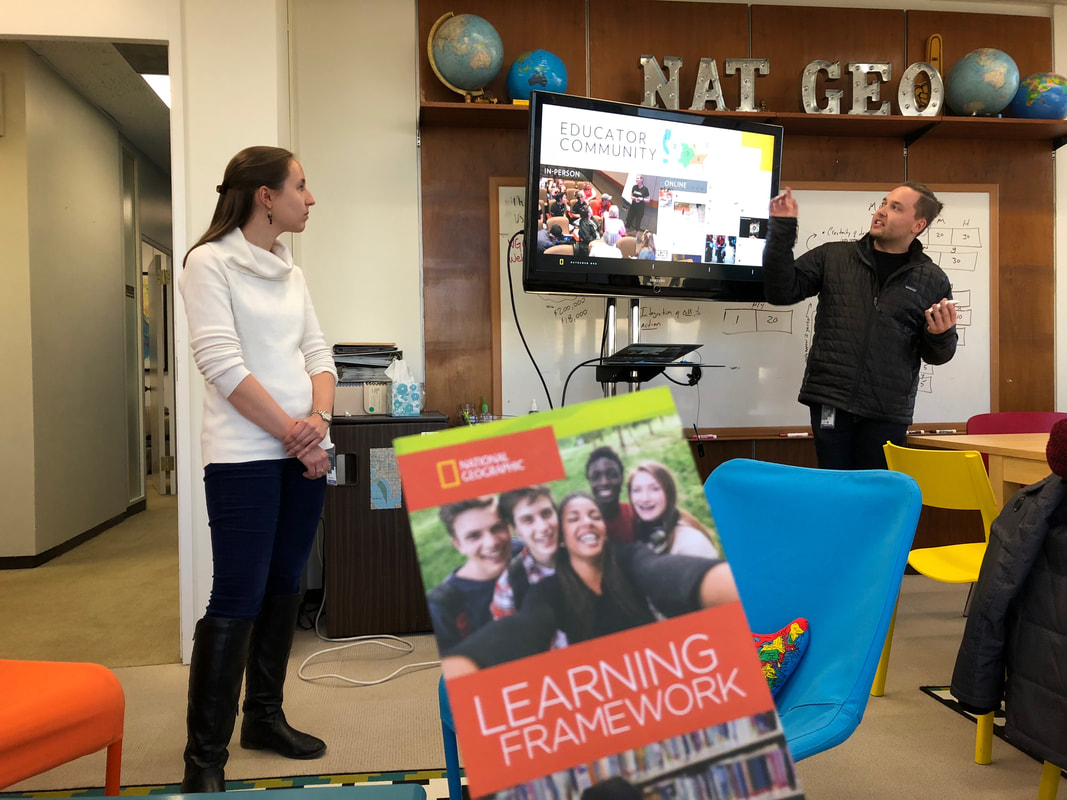|
Back in February, the Albert Einstein Fellows had the opportunity to explore how the National Geographic Society connect STEM and geographic literacy. We spent an afternoon at the Society learning about their education initiatives and visiting the engineering imaging laboratory. We met with the lead engineer with National Geographic Remote Imaging team, the group that facilitates the building of unique imaging tools and equipment for the National Geographic Society. Some of the equipment includes the dropcam, a camera that can film in some of the deepest regions of the world’s oceans, and the Crittercam, a camera attached to wild animals that can record video and audio as well as collect other data. The day of our visit they team had just finished testing of a camera case designed to withstand the immense heat of a raging wildfire. It was SO COOL to see the science and engineering that is used to create the iconic images and videos that the National Geographic Society is known for producing. We also learned about the National Geographic Society education resources and opportunities for professional development. The National Geographic Society played a huge role in my trajectory as a teacher. I received a grant from the National Geographic Society for my first ever Earthwatch expedition in 2004. On that expedition, I wrote a reflection that has served as my “touchstone” during my education career. In a way, I have the National Geographic Society to thank for my 100% confidence that the statement that “those who can’t … teach” is a fallacy. I can “do” science but I chose to teach. Since that initial experience, I have taken students on an additional ten expeditions. While no long directly associated with Nat Geo, the Earthwatch expeditions my students and I participate in definitely mesh with the National Geographic Society’s missions of exploring and protecting our plant while inspiring new generations through education initiatives and resources. Given impact and mission of the National Geographic Society, when the Einstein Fellows visited I was excited to learn of the educator certification program. “The Educator Certification program equips educators with the resources and training needed to teach students about the world in innovative, interdisciplinary ways. Benefits of certification include professional recognition; connection to a community of like-minded educators; and access to resources, mentorship, and leadership opportunities with National Geographic. Through this program, educators will learn about the National Geographic mission, how to teach interdisciplinarily through various scales and perspectives, and the National Geographic Learning Framework—all while applying these ideas to their own work and collaborating with educators worldwide.” I immediately began work on my certification process. First was participation in a virtual workshop where I learned about the National Geographic Learning Framework and the thousands of educational resources and opportunities available to educators. Emphasis during “Phase 1” of the certification process was on the attitudes, skills and knowledge of the explorer mindset. Phase 2 consisted of teaching two lessons that related to the Nat Geo Learning Framework and a teaching resource or lesson available through the Society. How was I going to teach two lessons while I don’t have any students? No problem! In April I traveled with a group of kids from my school to Costa Rica for an Earthwatch expedition during which we assisted on a study of frugivory and seed dispersal. The week with students enabled me to complete my Phase 2 lessons with no problem. The final component, Phase 3, involved creating a capstone video to showcase one of the lessons from phase 2. I was tasked with creating a video that tells the story of the lesson, the impact it had on the students and demonstrates my professional growth. In all the other teaching videos I have created (i.e. National Board Certification and Presidential Award for Excellence) the videos were uncut and unedited. For the capstone project however the video needed to attempt to capture an audience and tell a story (attributes that Nat Geo is quite known for). So, I spent quite a bit of time trying to edit together video clips and photographs for the final project. Shout out to my husband Curtis for capturing some video of me, even if it’s obvious I’m looking above the camera! Oops! I’ll find out if I met certification standards within 4-6 weeks. In the meantime, I have really really enjoyed the process of learning more about the National Geographic Society education philosophy and capturing the story of our work in Costa Rica!
|
Archives
July 2018
|
I give many of my IB Biology resources away, for the benefit of students and teachers around the world.
If you've found the materials helpful, please consider making a contribution of any amount
to this Earthwatch Expedition Fund.
Did I forget something? Know of a mistake? Have a suggestion? Let me know by emailing me here.
Before using any of the files available on this site,
please familiarize yourself with the Creative Commons Attribution License.
It prohibits the use of any material on this site for commercial purposes of any kind.
If you've found the materials helpful, please consider making a contribution of any amount
to this Earthwatch Expedition Fund.
Did I forget something? Know of a mistake? Have a suggestion? Let me know by emailing me here.
Before using any of the files available on this site,
please familiarize yourself with the Creative Commons Attribution License.
It prohibits the use of any material on this site for commercial purposes of any kind.





